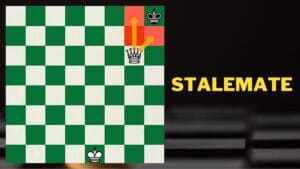
Stalemate Position on the Chessboard
Chess Stalemate Explained: The Ultimate Guide for Kids
Introduction to Chess Stalemate
In the fascinating world of chess, players encounter many unique situations. One of these is the “stalemate.” Understanding when a stalemate occurs in chess can be tricky, but it’s essential for every player, especially young chess enthusiasts. Let’s dive into the concept of a stalemate, explained in simple terms, so kids can grasp it easily.
What is a Stalemate in Chess?
A stalemate in chess happens when a player cannot make any legal moves, and their king is not in check. This situation results in a draw, meaning neither player wins or loses. It’s like a tie in a game where both sides end up with no advantage.
How Does a Stalemate Occur in Chess?
A stalemate occurs under these conditions:
- No Legal Moves: The player whose turn it is cannot move any of their pieces without breaking the rules.
- King Not in Check: The player’s king is not currently under attack, meaning it is not in check.
Imagine you are playing a game of chess, and it’s your opponent’s turn. If they have no safe place to move their king and no other pieces can move legally, it’s a stalemate.
Examples of Stalemate Situations in Chess
Let’s look at some examples to understand this better:
- King and Pawn vs. King: Suppose you have a king and a pawn, and your opponent has just their king. If you move your pawn to the last rank but leave no room for your opponent’s king to move, it’s a stalemate.
- Endgame with Limited Pieces: Often, stalemates occur in endgames where there are only a few pieces left on the board. For example, if you have a queen and a king, and you position your queen in such a way that the opposing king has no legal moves but is not in check, it’s a stalemate.
Why is Understanding Stalemate Important?
- Avoiding Unwanted Draws: Knowing about stalemates helps players avoid drawing games they might otherwise win. By carefully considering their moves, players can ensure they checkmate instead of stalemating.
- Strategic Draws: In some cases, a player might be losing but can force a stalemate to avoid a loss. Understanding stalemates can help players recognize and utilize this tactic so that they can snatch a half point in a loosing game.
Tips to Avoid Stalemate
- Keep Opponent’s King in Check: Ensure your opponent’s king is in check, forcing them to move it or block the check.
- Plan Your Moves: Think ahead and consider your opponent’s possible moves to avoid accidental stalemates.
- Practice Endgames: Familiarize yourself with common endgame positions to recognize and avoid potential stalemates.
Fun Stalemate Puzzles for Kids
To help kids understand stalemates better, here are some simple puzzles:
- Puzzle 1: Place a white king on e1 and a black king on e8. Add a white pawn on e7. It’s black’s turn. Can black move without causing a stalemate?
- Puzzle 2: Place a white king on e1, a black king on e8, and a white queen on d6. It’s white’s turn. How can white avoid a stalemate and win the game?
- Puzzle 3: (The Sneaky Knight) Place a white king on e1, a black king on e8, a white knight on f6, and a black pawn on e7. It’s black’s turn. Can black move without causing a stalemate? This puzzle demonstrates how a knight can create a stalemate situation when placed strategically.
-
Understanding when a stalemate occurs in chess is crucial for young players. It helps them avoid unwanted draws and recognize opportunities to save a game. By practicing and learning about stalemates, kids can improve their strategic thinking and overall chess skills. Remember, every move counts, so plan wisely and enjoy the game!
Video Guide for Chess Stalemate – Source:- Chess.com – Click here
Learn about Movement of all Chess Pieces – Click here